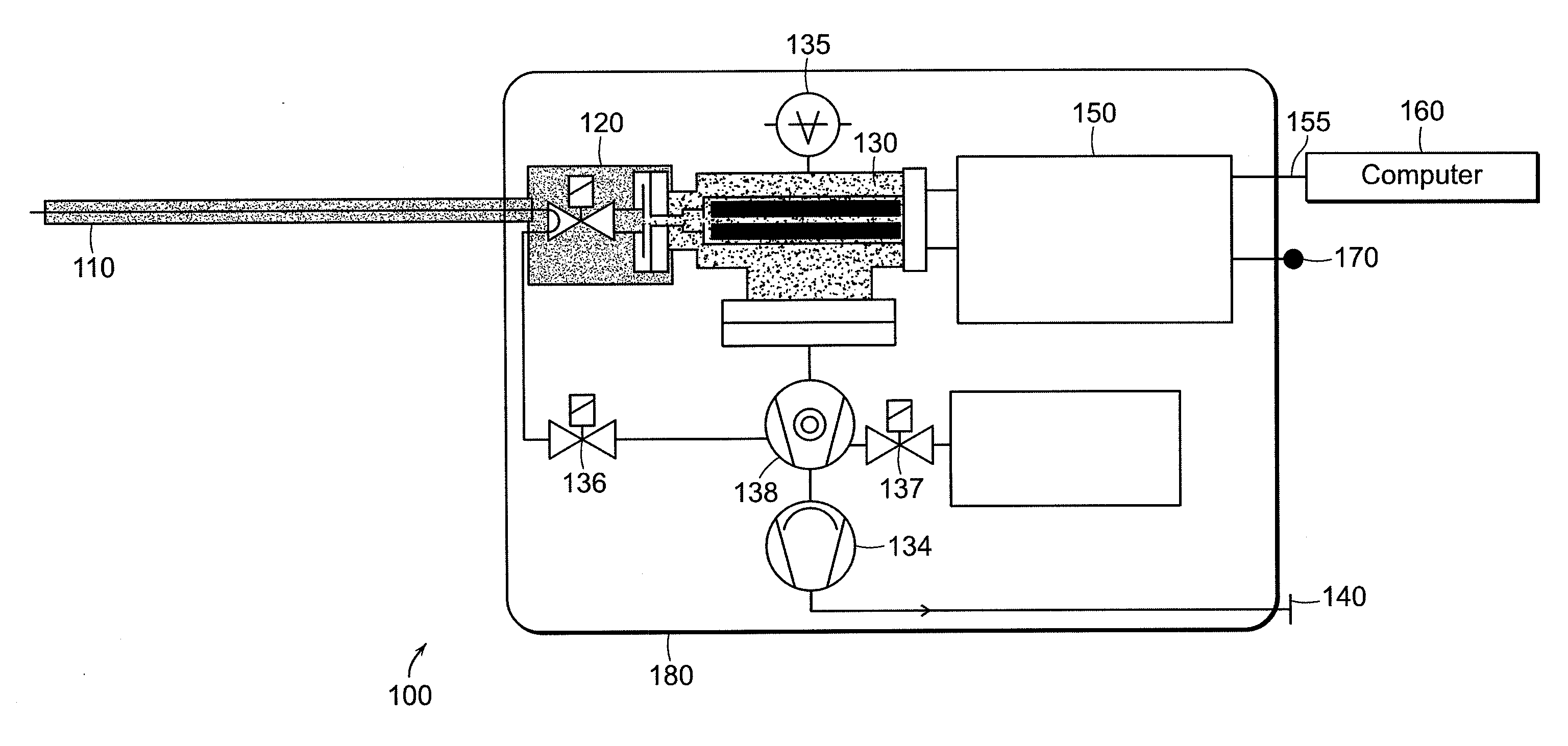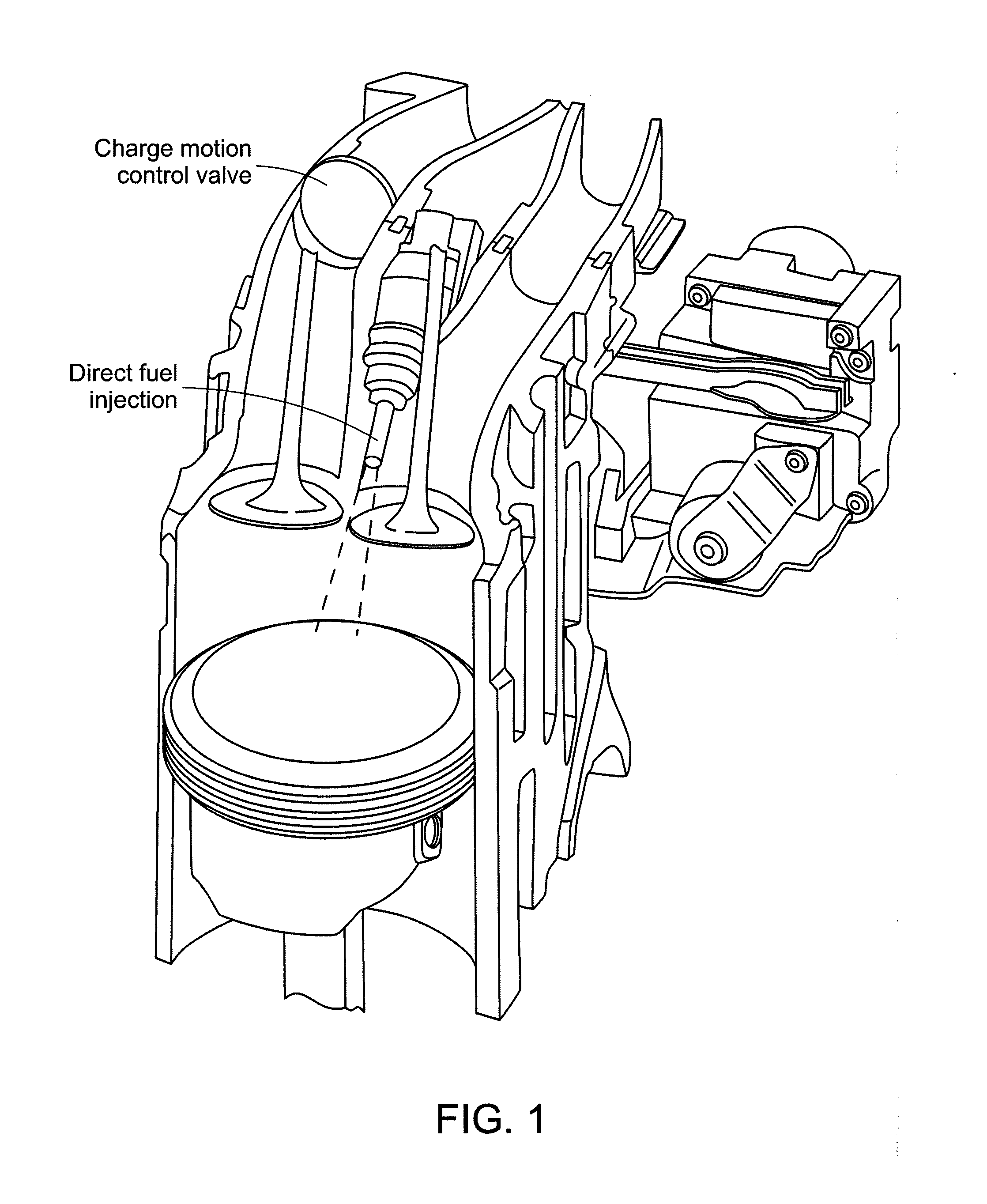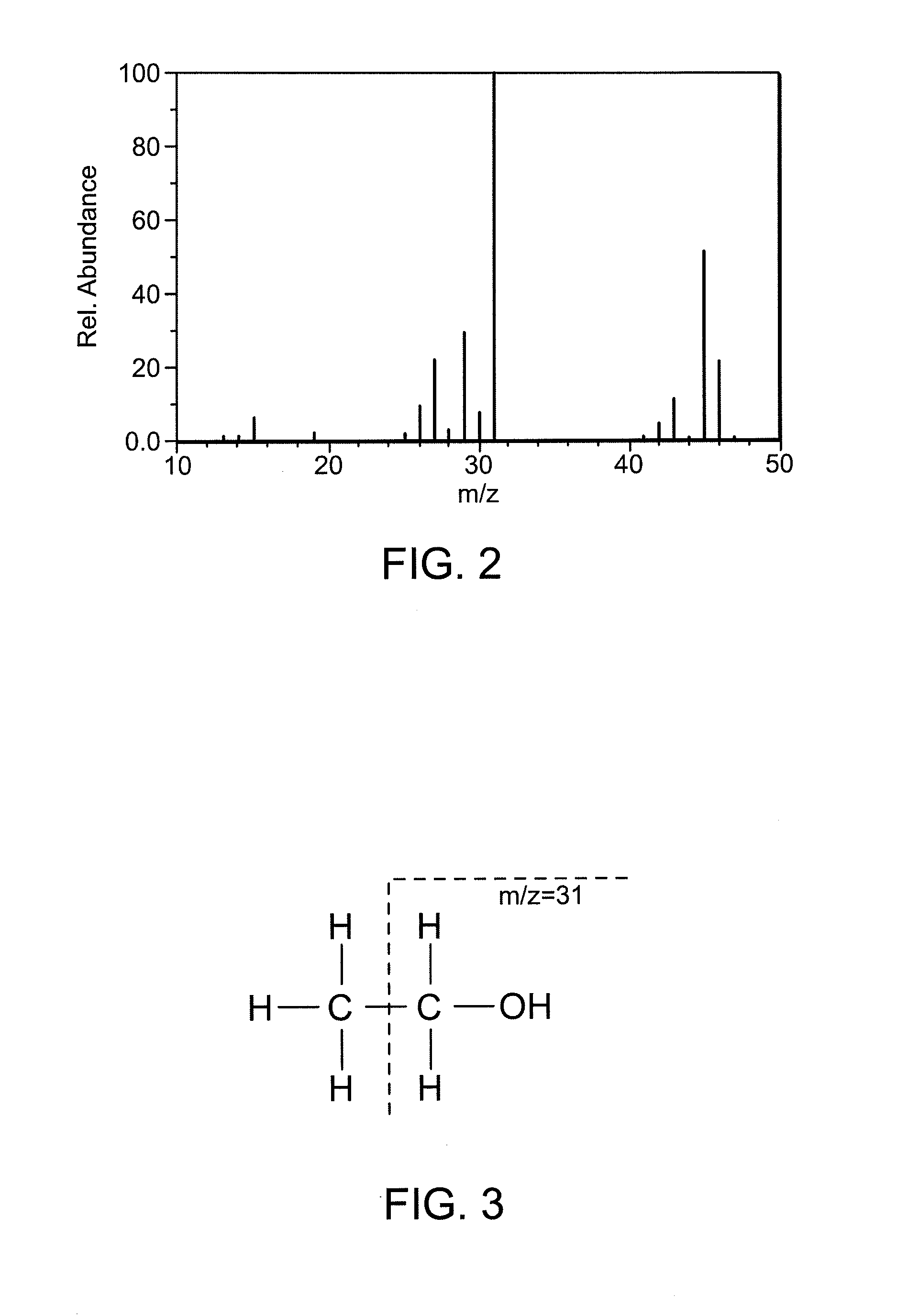Detection of ethanol emission from a spark ignition engine operating on gasohols
a technology of spark ignition engine and gasohol, which is applied in the direction of machines/engines, separation processes, instruments, etc., can solve the problems of cross interference, large amount of ethanol, so as to reduce the effect of fragment ions, and reduce the effect of ethanol emission
- Summary
- Abstract
- Description
- Claims
- Application Information
AI Technical Summary
Benefits of technology
Problems solved by technology
Method used
Image
Examples
Embodiment Construction
[0020]The invention provides a completely new approach to the measurement of combustion products, particularly ethanol, in exhaust gases of spark ignition engines burning ethanol-gasoline mixtures. Instead of attempting to minimize fragments and hence interference from other molecular species, the present invention enables identification of ethanol and other constituents of exhaust gas from their fragment ions. The invention utilizes an ionization process that produces fragment ions which are sufficiently repeatable and unique that they can be used in a mass spectrometry system to quantify certain molecular species in a sample.
[0021]This new technique was developed in two stages. In the first stage, exhaust speciation data were obtained from gas chromatography, and the distribution of fragment ions from major organic gas species was investigated. In the second stage, detection schemes from the first stage were validated in an engine experiment.
[0022]A mass spectrometer for use with ...
PUM
| Property | Measurement | Unit |
|---|---|---|
| Fraction | aaaaa | aaaaa |
| Time | aaaaa | aaaaa |
| Pressure | aaaaa | aaaaa |
Abstract
Description
Claims
Application Information
 Login to View More
Login to View More - R&D
- Intellectual Property
- Life Sciences
- Materials
- Tech Scout
- Unparalleled Data Quality
- Higher Quality Content
- 60% Fewer Hallucinations
Browse by: Latest US Patents, China's latest patents, Technical Efficacy Thesaurus, Application Domain, Technology Topic, Popular Technical Reports.
© 2025 PatSnap. All rights reserved.Legal|Privacy policy|Modern Slavery Act Transparency Statement|Sitemap|About US| Contact US: help@patsnap.com



